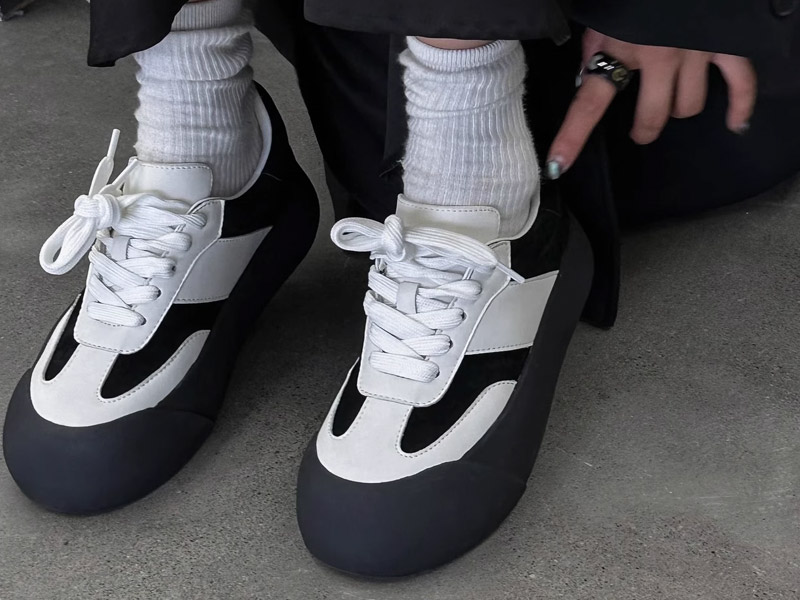EVA, or ethylene-vinyl acetate copolymer, is a random copolymer consisting of ethylene monomer and vinyl acetate monomer (VA). Compared to polyethylene (PE), EVA introduces vinyl acetate monomer into the molecular chain, which reduces its crystallinity while enhancing flexibility, impact resistance, filling mixing and heat sealing properties. EVA usually has a density between 0.91 and 0.93, has good transparency and luster, and is a thermoplastic polymer suitable for a variety of process molding processes, such as injection molding, extrusion, blow molding, calensing, etc.
EVA material is widely used in the field of footwear because of its softness, elasticity, shock absorption and chemical resistance of foamed footwear, especially in the sole manufacturing of middle and high-end travel shoes, hiking shoes, slippers and sandals.
The production process of EVA foam shoe material mainly has the following types:
1, the traditional plate large foam
This is a relatively low-cost process suitable for small factories. The sheet produced by this process needs to be blanked and edged to make the final product, but this method has low production efficiency and will produce more scraps.
2, small foam in the mold
Also known as mold foaming, the process will be prepared with raw material particles weighed into the mold, after foaming directly to form the basic shape of the shoe. This process performs better in detail presentation and dimensional accuracy. Small foam in the mold is divided into primary and secondary molding foam, of which secondary molding foam such as PHYLON bottom, has good dimensional stability and plasticity, can be shaped into different shapes according to design needs.
The challenge of small foam in the mold is to precisely match the mold and formula to control the magnification and hardness, and to avoid the contradiction between size and hardness. In addition, process conditions such as temperature, time and pressure also have significant effects on material properties.

3. Inject crosslinked foam
This process has become a mainstream method for large shoe manufacturers to produce EVA shoe midsoles. It involves a mixture of EVA, modifiers and auxiliaries, extruded for granulation, and then injection molding. Compared with the small foam in the mold, the injection crosslinked foam has the advantages of high production efficiency, basically no waste, can significantly reduce the manufacturing cost, and increase the diversity and functionality of product design.
4. Supercritical foaming
The linear structure of the EVA molecular chain requires the addition of a crosslinker to fix the gas during the foaming process. The key of supercritical foaming process is how to solve the problem of gas fixation. This process involves mixing, crosslinking, granulation, and then moulded pre-vulcanized soles, which are then placed in an autoclave and foamed through a physical foaming agent to finally make microcellular foamed sole materials.
EVA materials are processed in processes including granulation, injection/injection molding, foaming and soles. Through these processes, EVA materials occupy an important position in the manufacturing of footwear materials with their unique properties, providing consumers with diversified and high-performance footwear products.